#wife of frederick vi of denmark
Explore tagged Tumblr posts
Text
Facts about Frederick VI that live rent free in my head (that I simply must share) ft. a super sleepy Hopster
One of my current interests is a Danish King by the name of Frederick VI. I'm currently really tired, but really wanting to post about him. so this wont be as organized as i normally do. i'll try to avoid making it a wall of words, but this is probably going to be a word vomit.
Family/Romantic Life
this guy was a pretty caring dad, and I love that for him. This man fathered. generally a great dad. dare I say the epitome of a good dad from the time. especially given his less-than-good start in life.
his romantic life was one hell of a ride. like- he had a long-time mistress (of like- 30 years) with whom he would have an affair. but, during the Congress of Vienna, he cheated on both his wife and his long-time mistress with another woman. his mistress, Rikke, then cheated on him. That led to ever more soap opera-like stuff happening.
Man not only had legitimate (2) and illegitimate (5?) kids but took on another nine kids. Well, some of them were adults at the time, but still. basically, when his brother-in-law (a duke) died, he and a friend of said duke became the legal guardians of said kiddos. and from the sounds of it, it wasn't just throwing money at them. he actually interacted with them to a certain extent.
to piggyback on no. 3, he had agreed with his sister-in-law that one of the boys, Christian, would go to Copenhagen and attend the land cadet academy. Christian would go to Copenhagen one year after the decision. he didn't live with the monarch but did spend a fair amount of time with them. it is said the king was fond of him. unbeknownst to all of them, Christian would turn out to be Christian IX, the father-in-law of Europe.
he was a parsimonious guy, at least when it came to himself. he would wear his clothing until they were worn out. only then did he get a new one? two of his desks, both his personal one and the one for his aide are simplistic, and so are his things in general. even his rolling chair- which is in Fredericksborg castle, is worn out looking. hell- what I'm pretty sure was his own bed was nothing but an Iron camp bed! granted, he only spent a few days a week in it, as he was staying with his mistress. or his wife.
regarding his mistresses, he took really good care of them. I'm only uncertain about one- which is the French one he had at some point, which did produce a daughter. For the other two, however, it's pretty clear. the one woman he met in Vienna, Caroline Seufert, was granted a large pension from him. his long-time mistress, Rikke Dannemand, was given an apartment near him, and enough money to live a bourgeoise life. That was a far cry from Rikke's former life in Nyboder. My only problem with this was the sheer age gap between them. with Rikke, there was a 22-year age gap. with Seufert, it was 29 years. both women were under twenty when all of this started.
Political
he tended to not threaten people's lives. there was a case where one of the members of the chancellery, Anders Sandø Ørsted, who was a prominent critic of Frederick, and would often write about such criticisms. instead of exiling, punishing, or hell- even executing the guy, he just gave him the choice of his job or his pen. Ørsted chose his job.
was a gruff man (likely due to his upbringing) but quite generous with his people. notably, some of the most realistic small gifts I've seen in assorted Danish museums were given by him. For example, there is a little golden snuff box sitting in the National Museum of Denmark that he had given to somebody as a reward. It is small, intricate, and made of gold. but most of all, it was usable.
His reaction to the July Revolution was good. the November after it, constitutions were made for Schleswig and the Kingdom of Denmark- but the absolute monarchy was still in place. on top of that, 4 Advisory assemblies were created. One for each major region of Denmark. this was a very primitive version of what was desired (and what would come not long after) as the king still appointed a number of the members, and only 3% of the population got the right to vote.
He tended to overwork himself. sometimes until he got sick (like during the Vienna congress). he died still working. he also had the belief that no matter was too small for the king. this meant that he stuck his nose into a lot of paperwork he didn't necessarily need to worry about. this tended to elongate the completion of paperwork, but it did make him more aware of what was going on in the country, so there was some benefit.
Other
he built one of the finest gardens I have ever strolled in in Copenhagen. If you are on any servers with me, there's a 99% chance you've seen the pictures.
It's obvious that his strongest gene was his hair. In every portrait I've seen of his children, they're blonde. like- super blonde.
The man was stubborn as hell, not wanting to change too much. this tended to rear its ugly head from time to time, but he wasn't too stubborn to not kind of acknowledge his mistakes.
that was a word vomit... I do apologize. but thats all my sleepy brain can think of. I'll likely have more when i wake up tomorrow. and if i actually find the time, I can go into more detail. I just need to check the copyrights on a few of the books i have.
32 notes
·
View notes
Text


On December 12th 1574, Anne of Denmark, the wife of King James VI, was born.
Anne was the second child of Frederick II, King of Denmark and Sophia of Mecklenburg. Her father was reportedly so angry at the birth of a second daughter that he stormed into the birthing chamber to remonstrate his wife.
She was sent to live in Mecklenburg for the first four years of her life, before returning to Denmark, where she lived under her mother’s care until her marriage. She received a good education for a Princess of her rank.
In as early as 1586, the possibility of marriage was raised between Denmark and Scotland, but it wasn’t Anne who was the subject of debate, it was her sister Elizabeth. However, their dying father showed little interest in a match, and the Scots went home without a new Queen. Frederick died in 1588 and was succeeded by Anne’s brother Christian. Elizabeth became betrothed to the Duke of Brunswick-Wolfenbüttel in 1689, and the attention shifted to Anne. Her mother had taken over as matchmaker and negotiations were concluded quickly. Anne married James by proxy on 20 August 1589.
Anne set sail from Denmark on 5 September, but a storm scattered the fleet and Anne was stuck at sea for several days. The fleet was eventually forced to return to Denmark before setting off again. Once again, Anne didn’t make it to Scotland. On 24 September a public feast day was declared, and James ordered that prayers be said for Anne’s safe arrival. By early October, James despatched a ship to look for her and found her in Norway. Anne had been forced to go to Oslo to wait out the winter weather. James decided to go in person and sailed to Norway at the end of October. They were married in person in Oslo on 23 November, and during the ceremony, Anne was described as “a Princess both godly and beautiful … she giveth great contentment to his Majesty.” They travelled by sledge to Denmark, where Anne was reunited with her family. They spent three months in Denmark and even stayed for Elizabeth’s wedding.
Anne and James landed in Scotland on 1 May 1590, and she was given a grand ceremonial entry to Edinburgh, and she was crowned Queen of Scotland on 17 May. She may have converted to Catholicism within a few years of their marriage.
She gave birth to her first child in February 1594, a son named Henry Frederick. She was pregnant a total of 9 times, but she had two miscarriages, and four children died in infancy. Only Henry Frederick, Charles and Elizabeth survived to adulthood. Anne’s refusal to be separated from her eldest son, who was to be raised in Stirling Castle by the Earl of Mar is said to have caused a miscarriage.
On 24 March 1603, James succeeded to the throne of England and immediately headed towards England. Anne followed him but more slowly. She stopped at Stirling Castle and demanded to see her son. After a furious discussion, Anne suffered yet another miscarriage, and she was even dangerously ill for a while. James wanted her with him in London and finally allowed her to travel to England with both Henry and Elizabeth.
Anne and James were crowned together on 25 July 1603 in Westminster Abbey, and Anne threw herself into her new role as Queen of England. She spent a lot of time producing and performing in masquerades, which became more costly as her husband’s reign went on.
Tragedy struck in 1612 when her eldest son died, and Anne never recovered from the shock. Her grief became even greater when her daughter Elizabeth left for Germany to be married in 1613. Anne’s relationship with James was cordial, but they rarely saw each other. Anne’s health began to steadily deteriorate, and over Christmas 1618 she was too ill to attend the court festivities. James was afraid of disease and refused to visit Anne, but her son Charles remained by her side. Anne died in the early hours of 2 March 1619 at Hampton Court Palace in the same chamber where Jane Seymour had died.
15 notes
·
View notes
Text

Anne of Denmark, 1574–1619
Artist: John de Critz (Flemish, 1551–1642)
Date: circa 1605
Medium: Oil on Panel
Collection: National Maritime Museum, Greenwich, London, England
Anne of Denmark
Anne of Denmark (Danish: Anna; 12 December 1574 – 2 March 1619) was the wife of King James VI and I. She was Queen of Scotland from their marriage on 20 August 1589 and Queen of England and Ireland from the union of the Scottish and English crowns on 24 March 1603 until her death in 1619.
The second daughter of King Frederick II of Denmark and Sophie of Mecklenburg-Güstrow, Anne married James at age 14. They had three children who survived infancy: Henry Frederick, Prince of Wales, who predeceased his parents; Princess Elizabeth, who became Queen of Bohemia; and James's future successor, Charles I. Anne demonstrated an independent streak and a willingness to use factional Scottish politics in her conflicts with James over the custody of Prince Henry and his treatment of her friend Beatrix Ruthven. Anne appears to have loved James at first, but the couple gradually drifted and eventually lived apart, though mutual respect and a degree of affection survived.
In England, Anne shifted her energies from factional politics to patronage of the arts and constructed her own magnificent court, hosting one of the richest cultural salons in Europe. After 1612, she had sustained bouts of ill health and gradually withdrew from the centre of court life. Though she was reported to have been a Protestant at the time of her death, she may have converted to Catholicism at some point in her life.
Some historians have dismissed Anne as a lightweight queen, frivolous and self-indulgent. However, 18th-century writers including Thomas Birch and William Guthrie considered her a woman of "boundless intrigue". Recent reappraisals acknowledge Anne's assertive independence and, in particular, her dynamic significance as a patron of the arts during the Jacobean age.
#portrait#female#john de critz#flemish painter#queen of scotland#queen of england#queen of ireland#european queen#european art#early 17th century#costume#lace and crochet#jewelry#hair ornament#chair#throne#pearls#european nobility
7 notes
·
View notes
Photo

George Geldorp (Attr.) - Portrait of Henry, Prince of Wales (1594–1612) -
oil on canvas, height: 185 cm (72.8 in); width: 117 cm (46 in)
Lambeth Palace, London, UK
Henry Frederick, Prince of Wales KG (19 February 1594 – 6 November 1612), was the eldest son and heir apparent of James VI and I, King of England and Scotland; and his wife Anne of Denmark. His name derives from his grandfathers: Henry Stuart, Lord Darnley; and Frederick II of Denmark. Prince Henry was widely seen as a bright and promising heir to his father's thrones. However, at the age of 18, he predeceased his father when he died of typhoid fever. His younger brother Charles succeeded him as heir apparent to the English, Irish, and Scottish thrones.
George Geldorp, Georg Geldorp or Jorge Geldorp (1580/1595, Cologne – 4 November 1665, London) was a Flemish painter who was mainly active in England where he was known for his portraits and history paintings. He was also active as an art dealer and impresario.
29 notes
·
View notes
Text
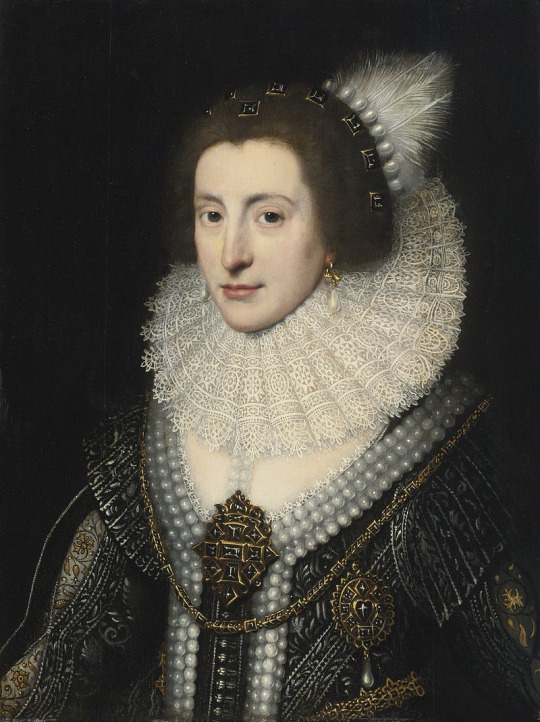
Elizabeth Stuart, Queen of Bohemia.
Portrait by the Workshop of Michiel Jansz. van Mierevelt, c. 1623.
Elizabeth was known as ‘the Winter Queen’, and her husband Frederick V as 'the Winter King’, due to their brief reign as monarchs of Bohemia. They were officially crowned in 1619, but were driven into exile after just one winter [Note: Henry VII, father of Henry VIII, was also known as 'the Winter King’. See documentary here.]
Her biographical details and regal connections are far too complicated to go into here - I suggest a read on Wikipedia and then further afield if you are sufficiently interested. Essentially, she was the second child and eldest daughter of James VI and I, King of Scotland, England, and Ireland, and his wife, Anne of Denmark, and became second-in-line to the throne when her elder brother, Henry Frederick, Prince of Wales, died at the age of 18 of typhoid fever. However, he was eventually succeeded by his younger brother, Charles, as Charles I, as mentioned in previous post here.
Elizabeth’s grandson by her daughter Sophia of Hanover succeeded to the British throne as George I, initiating the House of Hanover, when Queen Anne failed to produce any offspring despite 17 pregnancies.
ADD MORE INFO/EDIT.
2 notes
·
View notes
Text
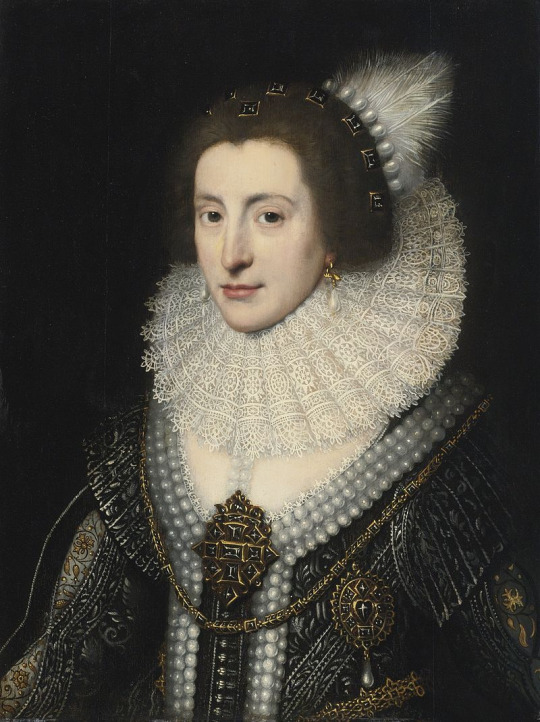
Elizabeth Stuart, Queen of Bohemia.
Portrait by the Workshop of Michiel Jansz. van Mierevelt, c. 1623.
Elizabeth was known as 'the Winter Queen', and her husband Frederick V as 'the Winter King', due to their brief reign as monarchs of Bohemia. They were officially crowned in 1619, but were driven into exile after just one winter [Note: Henry VII, father of Henry VIII, was also known as 'the Winter King'. See documentary here.]
Her biographical details and regal connections are far too complicated to go into here - I suggest a read on Wikipedia and then further afield if you are sufficiently interested. Essentially, she was the second child and eldest daughter of James VI and I, King of Scotland, England, and Ireland, and his wife, Anne of Denmark, and became second-in-line to the throne when her elder brother, Henry Frederick, Prince of Wales, died at the age of 18 of typhoid fever. However, he was eventually succeeded by his younger brother, Charles, as Charles I, as mentioned in previous post here.
Elizabeth's grandson by her daughter Sophia of Hanover succeeded to the British throne as George I, initiating the House of Hanover, when Queen Anne failed to produce any offspring despite 17 pregnancies (she's the subject of a film released in 2018 starring Olivia Colman, 'The Favourite' - I haven't seen it).
I do find this period of history really complicated. Basically, the line of succession after the death of Elizabeth I is as follows:
James I of England & Ireland, and VI of Scotland - r. 1603 - 1625. Son of Mary Queen of Scots and her second husband Henry Stuart, Lord Darnley (who was later murdered, allegedly by Mary's prospective third husband, James Hepburn, 4th Earl of Bothwell]. He was already James VI of Scotland when Elizabeth I died. His coronation united the two crowns, though I'm a bit confused about the exact details, or where Ireland fits into it all.
Charles I - r. 1625 - beheaded in 1649. The period between his execution and the Restoration of the Crown to his son Charles II was called 'The Interregnum'. It was during this time that Oliver Cromwell became Lord Protector (1653 - 58). After his death followed a brief period unsuccessful leadership by his son until the monarchy was restored in 1660. I find this period of history confusing and not of any real interest to me. It just seems to be about a load of unpleasant men fighting for control (aka The English Civil Wars.)
Charles II - r. 1660 - 1685. I don't know much about him, except he was known as 'The Merry Monarch', liked to party and had loads of illegitimate children, but none by his spouse, the Portuguese Catherine of Braganza. Henceforth, upon his death the crown went to his brother, James.
James II of England & Ireland, and VII of Scotland – r. 1685 – 1688. I know nothing about him other than he was married to a woman called Anne Hyde before he came king (I have mentioned her somewhere in an earlier post) and then Italian princess, Mary of Modena. He was succeed by his daughters Mary (along with her husband, the Dutch William of Orange, a grandson of Charles I, see link here) and then Anne.
Mary II of England co-ruled with her husband, who became William III – I haven’t got the dates of their reign to hand. Again, I’m very sketchy about this period of history, all I know is that their rule came about via the ‘Glorious Revolution’ and Protestant 'King Billy' has something to do with Northern Ireland (yeh, my knowledge in this area is really that slim). She died in 1694 and he ruled alone until his own death in 1702, when he was succeeded by Mary’s sister, Anne.
Anne – r. 1702 – 1714. No offspring despite 17 pregnancies, she was succeeded by George I, a German who spoke no English but who had a claim to the throne on account of him being the grandson of James I’s daughter – yep, back to where we started with the Winter Queen, Elizabeth of Bohemia. He would be the first of four Georges; the last of the Hanoverians were William IV and Queen Victoria.
Wow, quite a history lesson, especially for first thing Sunday morning! I will check it later for any errors. It all started simply, due to one of my scrapbook clippings from last night about Elizabeth of Bohemia, whom I'd not heard of before. It's really an attempt to consolidate my learning of this period after the Tudors, but I doubt I shall venture any further. As I've already mentioned here and in previous blog posts, these centuries don't hold much interest for me - a major reason why is I don't like much of the artworks created during these times, it's mainly all portraits of royals and aristocrats posing about in finery, or dull landscapes. But it's handy to try to commit to memory a timeline of who reigned when and the major political events which occurred in those eras.
1 note
·
View note
Photo

Marie of Hesse-Kassel, Queen of Denmark (28 October 1767 - 22 March 1852)
#marie of hesse-kassel#marie sophie frederikke#queen of denmark#daughter of charles landgrave of hesse-kassel#wife of frederick vi of denmark#history#women in history#18th century#19th century#art
2 notes
·
View notes
Photo

Princess Louise of Denmark and Norway (20 January 1750 – 12 January 1831) was born to Frederick V of Denmark and Louise of Great Britain. Her eldest daughter, Marie of Hesse-Kassel, was the wife of Frederick VI of Denmark.
#Louise of Denmark and Norway#Louise of Denmark#House Oldenburg#XVIII century#XIX century#people#portrait#paintings#art#arte
22 notes
·
View notes
Text










The Great-Grandchildren of Emperor Paul I
Emperor Paul had 71 legitimate (incl. morganatic) great-grandchildren — 58 survived to adulthood. Three of whom became reigning monarchs [Frederick III, German Emperor; Emperor Alexander III of Russia; and Queen Wilhelmina of the Netherlands]. One became a Queen consort of Greece [Grand Duchess Olga Konstantinovna of Russia]. Another two great-grandchildren became ruling a Grand Duke, and Duke of a German princely state [Mecklenburg-Schwerin and Saxe-Altenburg].
Among the 58 great-grandchildren that survived to adulthood, 39 of them have living descendants today. Including King Willem-Alexander of the Netherlands, King Felipe VI of Spain, Queen Margrethe II of Denmark, King Carl XVI Gustaf of Sweden, and the Prince of Wales.
Notes: Friedrich Franz II, Grand Duke of Mecklenburg-Schwerin is the father-in-law of both Grand Duke Vladimir Alexandrovich of Russia (his wife was Duchess Marie of Mecklenburg-Schwerin, or better known as Grand Duchess Maria Pavlovna the elder) and Grand Duchess Anastasia Mikhailovna of Russia (her husband was Friedrich Franz III, Grand Duke of Mecklenburg-Schwerin).
*Prince Moritz of Saxe-Altenburg is the father-in-law of Grand Duke Konstantin Konstantinovich (his wife was Princess Elisabeth of Saxe-Altenburg, or better known as Grand Duchess Elizabeth Mavrikievna).
*Four of Emperor Paul’s great-grandchildren married each other: Duke Alexander of Oldenburg & Princess Eugenia Maximilianovna of Leuchtenberg; George, 6th Duke of Leuchtenberg & Duchess Therese of Oldenburg.
*Duchess Alexandra Petrovna of Oldenburg (Grand Duchess of Russia) is the mother of Grand Duke Nicholas Nikolaevich and Peter Nikolaevich of Russia.
*Grand Duchess Olga Konstantinovna of Russia (Queen of Greece) is the mother-in-law (as well as first cousins) of Grand Duke Paul Alexandrovich and Grand Duke George Mikhailovich of Russia.
*Five of Paul I’s great-grandchildren (Grand Dukes Nicholas Mikhailovich, Dmitri Konstantinovich, Paul Alexandrovich, George Mikhailovich and Sergei Mikhailovich) were executed by the Bolsheviks between 1918 to 1919.
66 notes
·
View notes
Text
Charles Stuart and his Kingdoms: ‘Never Make Defence or Apology’
Charles I Ascends His Throne

Charles Stuart, King of Scotland, England and Ireland
Portrait by Anthony van Dyck (1636)
CHARLES STUART, Duke of Albany and Earl of Ross, never expected to become King of the United Kingdoms of Scotland, England and Ireland. He was the second son of King James VI of Scotland who, on the death of Queen Elizabeth I, became King James I of England, uniting the British crowns for the first time in history. Sickly, lonely and shy, Charles Stuart was looked down upon by his flamboyant older brother Prince Henry and starved of love by his reserved mother, Queen Anne of Denmark. Born in 1600, the bookish Charles, beset with ill health, lived in the shadows of King James’ boisterous court, but was suddenly thrust into prominence when Henry unexpectedly died in 1612 at the age of eighteen, to make Charles heir to the thrones of the United Kingdoms. James’ tuition of Charles to prepare him for his future role, was haphazard, but two aspects of this preparatory education became entirely formative and shaped Charles’ attitude to governance. One was a strong endorsement of High Church Anglicanism: undeniably Protestant, but one that maintained many of the organisational and liturgical forms of Roman Catholicism. The other was a devoted adherence to the philosophy of the Divine Right of Kings, a self justificatory belief system, strongly held by James, that monarchs were essentially anointed by God to rule and could brook no secular or religious barriers to their ability to do so. Anglicanism and the Divine Right were abiding principles which would define Charles’ dealings with the three kingdoms, their Parliaments and their religious representatives.
Charles ascended the throne in 1625 on the death of his father, and inherited a difficult foreign policy situation. What was to become the Thirty Years War - the Europe wide struggle between a resurgent Catholicism, championed by the Hapsburg Holy Roman Emperors and the German Protestant states - had broken out in 1618 with an imperial attack on Frederick IV, the Elector Palatine and Protestant states’ nominee for the throne of Bohemia, leading ultimately to the defeat, flight and exile of Frederick and his wife, Charles’ sister, the energetic and strong willed Elizabeth, in 1620. This plunged the Kingdoms into war with the Catholic powers of Austria and Spain and a disastrous attack on Cadiz masterminded by George Villiers, Duke of Buckingham, favourite of James I and dazzling mentor to the impressionable new king, Charles, ensued. The disaster bankrupted the realm’s war effort and led Charles to call his first Parliament in order to be granted funds to replace the losses incurred at Cadiz.
Parliament, although by no means representative of popular will, nonetheless had, since medieval times, acted as a restraint on unrestricted royal power and had come to represent the views to the monarch, of the aristocracy, the gentry and the bishops. The English Parliament in particular strongly defended its right to scrutinise royal actions and to make grants of funds conditional upon the monarch hearing, and hopefully acting on, Parliamentary petitions and advice. The Stuarts, however, inherited a chaotic financial situation. Elizabeth I had run up huge debts and had refused to modernise the wealth taxes from which Parliamentary subsidies to the Crown were derived, to reflect the rampant inflation of recent decades. This meant the state was financially challenged even without the burden of foreign wars. James had attempted to increase wealth taxes, which led to disputes with the few Parliaments that he called. A traditional subsidy granted by Parliament to new monarchs was “tonnage and poundage” a customs duty granted in perpetuity to the monarch to provide the Crown with a revenue stream independent thereafter of Parliamentary approval. The 1625 Parliament however opted to grant Charles tonnage and poundage for one year only, possibly as a means to pressure the young king to discuss tax issues. However Charles, displaying the impatience and high handedness that was to characterise his relationship with Parliament, viewed this decision as a calculated insult.
This mutual antipathy was further increased when Parliament made moves to impeach Buckingham due to his incompetent prosecution of the war against Spain. This fury against a man most Parliamentarians viewed as a dangerous and egotistical fool,was compounded by Buckingham’s insistence that the English navy land a force at La Rochelle, to relieve a force of Huguenots besieged there. This grandiose plan brought England into dispute with France, and a further front in its war against the Catholic powers of Europe. The attempt to relieve La Rochelle proved to be an unmitigated disaster and the beginning of the end for Buckingham. However, before Parliament could summon Villiers to face its censure, the Duke was murdered at Portsmouth by a disgruntled sailor, angry at having been passed over for promotion. The death of Buckingham could have presaged a new start for the King’s poor relationship with Parliament but after Villiers’ death, which hit the young man hard, Charles found himself drawn to a man almost as inflexible and ideological as himself: the Bishop of London, William Laud.
Laud was an advocate of Arminianism - a High Church belief strongly opposed to Calvinism that supported the role of bishops in the running of the Protestant church as opposed to the religious assemblies that governed the Presbyterian communities of lowland Scotland. Laud urged the King to achieve uniform episcopacy (religious administration headed by bishops) across all his kingdoms, and found a ready listener in Charles. By this time, however, the religious revolution that occurred during the reign of Edward VI had established a strong vein of Calvinism within the English church too and which found its expression in “Puritanism” a pejorative term for Low Church Calvinists who viewed the Reformation as not only incomplete, but under attack from recidivist Anglicanism. The religious disputes that were about to escalate were to dwarf those of finance and the constitution that had hitherto formed the fault lines between the King and his subjects.
In the meantime, Charles had dissolved two rebellious Parliaments and sought to raise funds for his wars through extra Parliamentary means, principally “enforced loans” on the gentry, comprising an estimate of the tax an individual could afford by the royal government, followed by a demand for payment. This reinterpretation of Tudor law led to significant opposition and the eventual publication of the “Petition of Right”, drawn up by an MP named Sir Edward Coke. The Petition comprised a restatement of existing law that forbade taxation without Parliamentary authorisation, banned martial law and upheld habeus corpus. At Charles’ third Parliament in 1629, the King accepted the Petition, but there nonetheless ensued a fierce debate in the Commons on the King’s right to raise money directly in contradiction of the Petition of Right. This culminated in MPs holding of the Speaker in his chair in the House when he attempted to leave what he believed to be a treasonous discourse, so the debate could legally continue. A furious Charles dissolved Parliament once again and ordered the arrest of three MPs who had been most closely involved in the prevention of the Speaker leaving the chamber. One of the arrested men, Sir John Eliot, refused to pay the resultant fines and died in prison in 1632, the first Parliamentary martyr in the long dispute with the King.
With the dissolution of the 1629 Parliament, Charles embarked on his “Personal Rule”: a period of eleven years in which there was no Parliament to thwart his wishes However, the disputes between the King and his subjects concerning the rule of law and the governance of the Churches of England and Scotland, had only just begun.
8 notes
·
View notes
Text


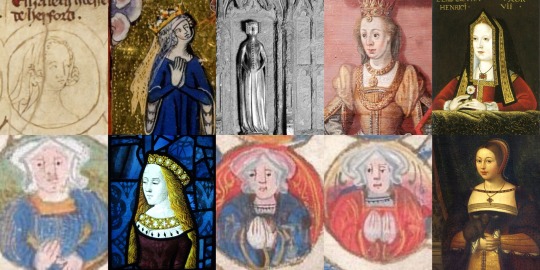
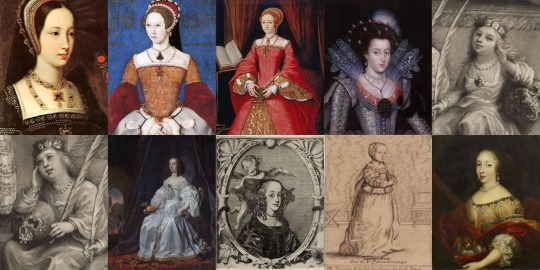
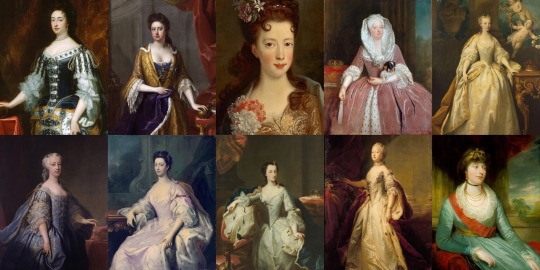
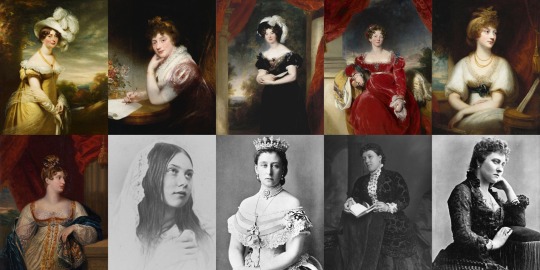

Every English Princess Ever
You’ve heard of Every Queen of England Ever, now I present to you another product that proves I have way too much time on my hands! If you notice any mistakes, please point them out to me kindly. I am sorry I do not know everything, but there is no reason to be rude. 😁
Æthelswith - Daughter of Æthelwulf and his first wife Osburh. She married King Burgred of Mercia in 853, making her the Queen of Mercia.
Æthelflæd - Daughter of Alfred the Great and Ealhswith. When her husband Æthelred, Lord of Mercians died in 911, she became Lady of the Mercians, and reigned for seven years.
Æthelgifu - Daughter of Alfred the Great and Ealhswith. When Alfred founded Shaftesbury Abbey in 890, he made her its first abbess.
Ælfthryth - Daughter of Alfred the Great and Ealhswith. Her marriage to Baldwin II, Count of Flanders made her Countess of Flanders.
Eadgifu - Daughter of Edward the Elder and his second wife Ælfflæd. She was Queen of West Francia by her marriage to Charles III.
Eadhild - Daughter of Edward the Elder and his second wife Ælfflæd. She married Hugh, Duke of the Franks in 937.
Eadgyth - Daughter of Edward the Elder and his second wife Ælfflæd. She married Otto in 930, who became Otto I, King of Germany in 936, also making her Queen of Germany.
Eadburh - Daughter of Edward the Elder and his third wife Eadgifu. She lived her life as a nun.
Godgifu - Daughter of Æthelred the Unready and his second wife Emma of Normandy. Her marriage to Eustace II, Count of Boulogne made her Countess of Boulogne.
Gunhilda - Daughter of Cnut the Great and his second wife Emma of Normandy. She became Queen of Germany when she married Henry III.
Gytha - Daughter of Harold II and Edith Swanneck. She was Princess of Rus from her marriage to Vladimir II Monomakh.
Adeliza - Daughter of William the Conqueror and Matilda of Flanders.
Cecilia - Daughter of William the Conqueror and Matilda of Flanders. She was entered into the Abbey of the Holy Trinity of Caen at a young age, and became Abbess in 1112.
Constance - Daughter of William the Conqueror and Matilda of Flanders. She became Duchess of Brittany when she married Alan IV, Duke of Brittany.
Adela - Daughter of William the Conqueror and Matilda of Flanders. She was Countess of Blois by her marriage to Stephen, Count of Blois, and was regent of Blois two times.
Empress Matilda - Daughter of Henry I and Matilda of Scotland. She became Holy Roman Empress in 1114, and acted as Queen of England from 1141 to 1148, but was disputed.
Marie I - Daughter of Stephen and Matilda I, Countess of Boulogne. When her brother William I, Count of Boulogne died childless in 1159, Marie succeeded him as the Countess of Boulogne.
Matilda - Daughter of Henry II and Eleanor of Aquitaine. She was Duchess of Saxony and Bavaria from her marriage to Henry the Lion.
Eleanor - Daughter of Henry II and Eleanor of Aquitaine. She became Queen of Castile and Toledo when she married Alfonso VIII.
Joan - Daughter of Henry II and Eleanor of Aquitaine. She was Queen of Sicily by her marriage to William II until his death in 1189, and became Countess of Toulouse when she married Raymond VI in 1196.
Joan - Daughter of John and Isabella of Angoulême. She was Queen of Scotland by her marriage to Alexander II.
Isabella - Daughter of John and Isabella of Angoulême. She was Holy Roman Empress and Queen of Sicily and Germany by her marriage to Frederick II.
Eleanor - Daughter of John and Isabella of Angoulême. She was Countess of Pembroke by her first marriage to William Marshal, 2nd Earl of Pembroke, and Countess of Leicester by her second marriage to Simon de Montfort, 6th Earl of Leicester.
Margaret - Daughter of Henry III and Eleanor of Provence. She was Queen of Scotland by her marriage to Alexander III.
Beatrice - Daughter of Henry III and Eleanor of Provence. (Her wikipedia says she was Countess of Richmond, which I’m not sure is true or not. Her husband was the Duke of Brittany, but it is possible she somehow inherited the title in her own right).
Katherine - Daughter of Henry III and Eleanor of Provence. She passed away at the age of three.
Eleanor - Daughter of Edward I and Eleanor of Castile. She was Countess of Bar by her marriage to Henry III, Count of Bar.
Joan of Acre - Daughter of Edward I and Eleanor of Castile. She was Countess of Hertford and Gloucester by her first marriage to Gilbert de Clare, 7th Earl of Gloucester and 6th Earl of Hertford.
Margaret - Daughter of Edward I and Eleanor of Castile. She was Duchess of Brabant, Lothier and Limburg by her marriage to John II.
Mary of Woodstock - Daughter of Edward I and Eleanor of Castile. She was a nun at Amesbury Priory.
Elizabeth of Rhuddlan - Daughter of Edward I and Eleanor of Castile. She was Countess of Holland by her first marriage to John I, and Countess of Hereford by her second marriage to Humphrey de Bohun, 4th Earl of Hereford.
Eleanor of Woodstock - Daughter of Edward II and Isabella of France. She was Duchess of Guelders by her marriage to Reginald II, and was regent of Guelders while her son was still young.
Joan of the Tower - Daughter of Edward II and Isabella of France. She got her name from being born in the Tower of London. Joan was Queen of Scotland by her marriage to David II.
Isabella - Daughter of Edward III and Philippa of Hainault. She was Countess of Bedford and Lady of Coucy by her marriage to Enguerrand VIII, and was made a Lady of the Garter in 1376.
Joan - Daughter of Edward III and Philippa of Hainault. She died during the Black Death at the age of fourteen.
Mary of Waltham - Daughter of Edward III and Philippa of Hainault. She was Duchess of Brittany by her marriage to John IV, Duke of Brittany, and was made a Lady of the Garter in 1378. She died young at the age of sixteen.
Margaret of Windsor - Daughter of Edward III and Philippa of Hainault. She was Countess of Pembroke by her marriage to John Hastings, 2nd Earl of Pembroke. Margaret died young at the age of fifteen.
Blanche of Lancaster - Daughter of Henry IV and Mary de Bohun. She was Electress Palatine by her marriage to Louis III, Electress Palatine.
Philippa of Lancaster - Daughter of Henry IV and Mary de Bohun. She was Queen of Denmark, Sweden and Norway by her marriage to Eric III, VIII & XIII.
Elizabeth of York - Daughter of Edward IV and Elizabeth Woodville. She was Queen of England by her marriage to Henry VII.
Mary of York - Daughter of Edward IV and Elizabeth Woodville. She died at the age of fourteen.
Cecily of York - Daughter of Edward IV and Elizabeth Woodville. She was First Lady of the Bedchamber to her sister, Elizabeth of York, from 1485 to 1487. Cecily was Viscountess Welles by her marriage to John Welles, 1st Viscount Welles.
Margaret of York - Daughter of Edward IV and Elizabeth Woodville. She died at just eight months old.
Anne of York - Daughter of Edward IV and Elizabeth Woodville. She was First Lady of the Bedchamber to her sister, Elizabeth of York, from 1487 to 1494.
Catherine of York - Daughter of Edward IV and Elizabeth Woodville. She was Countess of Devon by her marriage to William Courtenay, 1st Earl of Devon.
Bridget of York - Daughter of Edward IV and Elizabeth Woodville. She was a nun at Dartford Priory.
Margaret Tudor - Daughter of Henry VII and Elizabeth of York. She was Queen of Scotland by her marriage to James IV of Scotland.
Elizabeth Tudor - Daughter of Henry VII and Elizabeth of York. She died at the age of three.
Mary Tudor - Daughter of Henry VII and Elizabeth of York. She was Queen of France by her first marriage to Louis XII of France, and Duchess of Suffolk by her second marriage to Charles Brandon, 1st Duke of Suffolk.
Mary I - Daughter of Henry VIII and Catherine of Aragon. She was Queen of England from 1553 to 1558, and Queen of Spain by her marriage to Philip II of Spain.
Elizabeth I - Daughter of Henry VIII and Anne Boleyn. She was Queen of England from 1558 to 1603.
Elizabeth Stuart - Daughter of James VI & I and Anne of Denmark. She was Electress Palatine and Queen of Bohemia by her marriage to Frederick V.
Margaret Stuart - Daughter of James VI & I and Anne of Denmark. She died at the age of one year old.
Mary Stuart - Daughter of James VI & I and Anne of Denmark. She died at the age of two years old.
Sophia Stuart - Daughter of James VI & I and Anne of Denmark. She lived for just one day.
Mary - Daughter of Charles I and Henrietta Maria. She was Princess of Orange and Countess of Nassau by her marriage to William II, Prince of Orange.
Elizabeth Stuart - Daughter of Charles I and Henrietta Maria. She died at the age of fourteen.
Anne Stuart - Daughter of Charles I and Henrietta Maria. She died at the age of three.
Henrietta - Daughter of Charles I and Henrietta Maria. She was Duchess of Orléans by her marriage to Philippe I, Duke of Orléans.
Mary II - Daughter of James II & VII and Anne Hyde. She was Queen of England from 1689 to 1694.
Anne - Daughter of James II & VII and Anne Hyde. She was Queen of England and Great Britain from 1702 to 1714.
Louisa Maria Stuart - Daughter of James II & VII and Mary of Modena. She died at the age of nineteen.
Sophia Dorothea of Hanover - Daughter of George I and Sophia Dorothea of Celle. She was Queen of Prussia and Electress Brandenburg by her marriage to Frederick William I of Prussia.
Anne - Daughter of George II and Caroline of Ansbach. She was Princess of Orange by her marriage to William IV, Prince of Orange.
Amelia of Great Britain - Daughter of George II and Caroline of Ansbach.
Caroline Elizabeth of Great Britain - Daughter of George II and Caroline of Ansbach.
Mary of Great Britain - Daughter of George II and Caroline of Ansbach. She was Landgravine of Hesse-Kassel by her marriage to Frederick II, Landgrave of Hesse-Kassel.
Louise of Great Britain - Daughter of George II and Caroline of Ansbach. She was Queen of Denmark and Norway by her marriage to Frederick V of Denmark.
Charlotte - Daughter of George III and Charlotte of Mecklenburg-Strelitz. She was Duchess, Electress and Queen of Württemberg by her marriage to Frederick I of Württemberg.
Augusta Sophia - Daughter of George III and Charlotte of Mecklenburg-Strelitz.
Elizabeth - Daughter of George III and Charlotte of Mecklenburg-Strelitz. She was Landgravine of Hesse-Homburg by her marriage to Frederick VI, Landgrave of Hesse-Homburg.
Mary - Daughter of George III and Charlotte of Mecklenburg-Strelitz. She was Duchess of Gloucester and Edinburgh by her marriage to Prince William Frederick, Duke of Gloucester and Edinburgh.
Sophia - Daughter of George III and Charlotte of Mecklenburg-Strelitz.
Amelia - Daughter of George III and Charlotte of Mecklenburg-Strelitz.
Charlotte of Wales - Daughter of George IV and Caroline of Brunswick. She was their only child, and died before both of them.
Charlotte Augusta Louisa of Clarence - Daughter of William IV and Adelaide of Saxe-Meiningen. She died shortly after birth.
Elizabeth Georgiana Adelaide of Clarence - Daughter of William IV and Adelaide of Saxe-Meiningen. She died shortly after birth.
Victoria - Daughter of Queen Victoria and Prince Albert. She was German Empress and Queen of Prussia by her marriage to Frederick III, German Emperor.
Alice - Daughter of Queen Victoria and Prince Albert. She was Grand Duchess of Hesse and Rhine by her marriage to Louis IV, Grand Duke of Hesse.
Helena - Daughter of Queen Victoria and Prince Albert. She was Princess of Schleswig-Holstein by her marriage to Prince Christian of Schleswig-Holstein.
Louise - Daughter of Queen Victoria and Prince Albert. She was Duchess of Argyll and Viceregal of Canada by her marriage to John Campbell, 9th Duke of Argyll.
Beatrice - Daughter of Queen Victoria and Prince Albert. She was Princess of Battenberg by her marriage to Prince Henry of Battenberg.
Louise of Wales - Daughter of Edward VII and Alexandra of Denmark. She was Duchess of Fife by her marriage to Alexander Duff, 1st Duke of Fife.
Victoria of Wales - Daughter of Edward VII and Alexandra of Denmark.
Maud of Wales - Daughter of Edward VII and Alexandra of Denmark. She was Queen of Norway by her marriage to Haakon VII of Norway.
Mary of York - Daughter of George V and Mary of Teck. She was Countess of Harewood by her marriage to Henry Lascelles, 6th Earl of Harewood.
Elizabeth II - Daughter of George VI and Elizabeth Bowes-Lyon. She is Queen of the UK from 1952 to present.
Margaret Rose of York - Daughter of George VI and Elizabeth Bowes-Lyon. She was Countess of Snowdon.
Anne of Edinburgh - Daughter of Elizabeth II and Prince Philip.
#british history#historical women#empress matilda#elizabeth of york#margaret tudor#mary i#elizabeth i#british royal family
160 notes
·
View notes
Text









122 years since the birth of HM King Paul of Hellenes Prince of Denmark
Paul was born on 14 December 1901 at Tatoi Palace in Athens, the third son of King Constantine I of Greece and his wife, Princess Sophia of Prussia. He trained as an army officer at the Royal Military College, Sandhurst and later at the Hellenic Military Academy in Kypseli, Athens. Paul was an army officer cadet in the Coldstream Guards and Lieutenant with the Evzones.
From 1917 to 1920, Paul lived in exile with his father, Constantine I. From 1923 to 1935, he lived in exile again in England, this time with his brother, George II. He worked briefly in an aircraft factory under an alias, and through Viscount Tredegar met and befriended notorious literary muse Denham Fouts, who later alleged an affair.
However, Fouts's friend John B. L. Goodwin said Fouts often made up stories about his life,and literary critic Katherine Bucknell thought many of the tales about him were myths.
To his family, he was known as Palo
Pávlos; 14 December was King of Greece from 1 April 1947 until his death in 1964. He was succeeded by his son, Constantine II.
Paul was first cousin to Prince Philip, Duke of Edinburgh and maternal grandfather to Felipe VI of Spain.
On 9 January 1938, Paul married Princess Frederica of Hanover, his first cousin once removed through Frederick III, German Emperor, and Victoria, Princess Royal, and second cousin through Christian IX of Denmark, in Athens. They had three children:
Sophia, Queen of Spain (born 1938).
Constantine II, King of the Hellenes (born 1940)
Princess Irene of Greece and Denmark (born 1942).
During most of World War II, from 1941 to 1946, when Greece was under German occupation, Paul was with the Greek government-in-exile in London and Cairo. From Cairo, he broadcast messages to the Greek people.
Paul returned to Greece in 1946. He succeeded to the throne in 1947, upon the death of his childless elder brother, King George II, during the Greek Civil War (between Greek Communists and the non-communist Greek government). In 1947 he was unable to attend the wedding of his first cousin, Prince Philip, Duke of Edinburgh to the future Queen Elizabeth II of the United Kingdom as he was suffering from typhoid fever.
By 1949 the Civil War was effectively over, with the Communist insurgents ceasing the majority of their operations, and the task of rebuilding the shattered north of the country began.
In the 1950s Greece recovered economically, and diplomatic and trade links were strengthened by Paul’s state visits abroad. He became the first Greek Monarch to visit a Turkish Head of State. However, links with Britain became strained over Cyprus, where the majority Greek population favored union with Greece, which Britain, as the colonial power, would not endorse. Eventually, Cyprus became an independent state in 1960.
In December 1959, Prince Maximillian of Bavaria presented King Otto's coronation regalia to Paul. It had been almost a century since they were last in Greece.
Meanwhile, republican sentiment was growing in Greece. Both Paul and Frederica attracted (a very unfair criticism though as always in Greece it was the Royal family who was responsible for all bad thing happened in Greece)
criticism for their interference in politics,frequent foreign travels, and the cost of maintaining the Royal Family. Paul responded by economising and donated his private estate at Polidendri to the State.
In 1959, he had an operation for a cataract, and in 1963 an emergency operation for appendicitis. In late February 1964, he underwent a further operation for stomach cancer, and about a week later on 6 March 1964, King Paul I died in Athens and buried in Tatoi Royal Estates Cemetery.
121 χρόνια από την γέννηση Της ΑΜ Βασιλιά Παύλου Α’ των Ελλήνων Πρίγκιπα της Δανίας
Ο Παύλος γεννήθηκε στις 14 Δεκεμβρίου 1901 στα Ανάκτορα Τατοΐου στην Αθήνα, τρίτος γιος του βασιλιά Κωνσταντίνου Α΄ της Ελλάδας και της συζύγου του, πριγκίπισσας Σοφίας της Πρωσίας. Εκπαιδεύτηκε ως αξιωματικός στρατού στο Βασιλικό Στρατιωτικό Κολλέγιο του Σάντχερστ και αργότερα στην Ελληνική Στρατιωτική Ακαδημία στην Κυψέλη της Αθήνας. Ο Παύλος ήταν δόκιμος αξιωματικός του στρατού στις Φρουρές Coldstream και Υπολοχαγός στους Εύζωνες.
Από το 1917 έως το 1920, ο Παύλος έζησε εξόριστος με τον πατέρα του, Κωνσταντίνο Α'. Από το 1923 έως το 1935, έζησε ξανά εξόριστος στην Αγγλία, αυτή τη φορά με τον αδελφό του, Γεώργιο Β'. Εργάστηκε για λίγο σε ένα εργοστάσιο αεροσκαφών με ψευδώνυμο, και μέσω του Viscount Tredegar γνώρισε και έγινε φίλος με τη διαβόητη λογοτεχνική μούσα Denham Fouts, η οποία αργότερα ισχυρίστηκε ότι είχαν σχέση.
Ωστόσο, ο φίλος του Φάουτς, Τζον Μπ. Λ. Γκούντγουιν, είπε ότι ο Φάουτς συχνά έφτιαχνε ιστορίες για τη ζωή του και η κριτικός λογοτεχνίας Κάθριν Μπάκνελ σκέφτηκε ότι πολλές από τις ιστορίες για αυτόν ήταν μύθοι.
Στην οικογένειά του, ήταν γνωστός ως Πάλο
Ο Παυλος ηταν βασιλιάς της Ελλάδας από την 1η Απριλίου 1947 μέχρι το θάνατό του το 1964. Τον διαδέχθηκε ο γιος του, Κωνσταντίνος Β'.
Ο Παύλος ήταν πρώτος ξάδερφος του πρίγκιπα Φίλιππου, δούκα του Εδιμβούργου και παππούς του Φελίπε Στ’ της Ισπανίας από τη μητέρα του.
Στις 9 Ιανουαρίου 1938, ο Παύλος παντρεύτηκε την πριγκίπισσα Φρειδερίκη του Ανόβερου, την πρώτη του ξαδέρφη μέσω του Φρειδερίκου Γ', Γερμανού Αυτοκράτορα, και της Βικτώριας, της Πριγκίπισσας Ρουαγιάλ, και δεύτερη ξαδέρφη μέσω του Κρίστιαν Θ' της Δανίας, στην Αθήνα. Είχαν τρία παιδιά:
Σοφία, βασίλισσα της Ισπανίας (γεν. 1938).
Κωνσταντίνος Β', Βασιλιάς των Ελλήνων (γεν. 1940)
Πριγκίπισσα Ειρήνη της Ελλάδας και της Δανίας (γεν. 1942).
Κατά το μεγαλύτερο μέρος του Β' Παγκοσμίου Πολέμου, από το 1941 έως το 1946, όταν η Ελλάδα βρισκόταν υπό γερμανική κατοχή, ο Παύλος ήταν με την ελληνική εξόριστη κυβέρνηση στο Λονδίνο και στο Κ��ιρο. Από το Κάιρο μετέδιδε μηνύματα στον ελληνικό λαό.
Ο Παύλος επέστρεψε στην Ελλάδα το 1946. Διαδέχθηκε στον θρόνο το 1947, μετά τον θάνατο του άτεκνου μεγαλύτερου αδελφού του, Βασιλιά Γεωργίου Β', κατά τη διάρκεια του Ελληνικού Εμφυλίου Πολέμου (μεταξύ Ελλήνων κομμουνιστών και της μη κομμουνιστικής ελληνικής κυβέρνησης). Το 1947 δεν μπόρεσε να παρευρεθεί στον γάμο του πρώτου του ξαδέλφου, πρίγκιπα Φίλιππου, δούκα του Εδιμβούργου με τη μελλοντική βασίλισσα Ελισάβετ Β' του Ηνωμένου Βασιλείου, καθώς έπασχε από τυφοειδή πυρετό.
Μέχρι το 1949 ο Εμφύλιος Πόλεμος είχε ουσιαστικά τελειώσει, με τους κομμουνιστές αντάρτες να διέκοψαν την πλειονότητα των επιχειρήσεων τους και το έργο της ανοικοδόμησης του κατεστραμμένου βόρειου τμήματος της χώρας ξεκίνησε.
Στη δεκαετία του 1950 η Ελλάδα ανέκαμψε οικονομικά και οι διπλωματικές και εμπορικές σχέσεις ενισχύθηκαν από τις κρατικές επισκέψεις του Παύλου στο εξωτερικό. Έγινε ο πρώτος Έλληνας μονάρχης που επισκέφτηκε Τούρκο Αρχηγό Κράτους. Ωστόσο, οι δεσμοί με τη Βρετανία έγιναν τεταμένες λόγω της Κύπρου, όπου η πλειοψηφία του ελληνικού πληθυσμού τάχθηκε υπέρ της ένωσης με την Ελλάδα, την οποία η Βρετανία, ως αποικιακή δύναμη, δεν θα υποστήριζε. Τελικά, η Κύπρος έγινε ανεξάρτητο κράτος το 1960.
Τον Δεκέμβριο του 1959, ο πρίγκιπας Μαξιμιλιανός της Βαυαρίας παρουσίασε στον Παύλο τα Κοσμηματα της στέψης του Όθωνα. Είχε περάσει σχεδόν ένας αιώνας από την τελευταία φορά που βρέθηκαν στην Ελλάδα.
Εν τω μεταξύ, το ρεπουμπλικανικό αίσθημα αυξανόταν στην Ελλάδα. Τόσο ο Παυλος όσο και η Φρειδερικη προσέλκυσαν (μια πολύ άδικη κριτική αν και όπως πάντα στην Ελλάδα ήταν η βασιλική οικογένεια που ήταν υπεύθυνη για όλα τα άσχημα που συνέβησαν στον τόπο)
κριτική για τις παρεμβάσεις τους στην πολιτική, τα συχνά ταξίδια στο εξωτερικό και το κόστος διατήρησης της βασιλικής οικογένειας. Ο Παύλος ανταποκρίθηκε εξοικονομώντας και δώρισε την ιδιωτική του περιουσία στο Πολυδένδρι στο Δημόσιο.
Το 1959 έκανε εγχείρηση καταρράκτη και το 1963 επείγουσα επέμβαση σκωληκοειδίτιδας. Στα τέλη Φεβρουαρίου 1964, υποβλήθηκε σε περαιτέρω εγχείρηση για καρκίνο του στομάχου και περίπου μια εβδομάδα αργότερα, στις 6 Μαρτίου 1964, ο βασιλιάς Παύλος Α' πέθανε στην Αθήνα και τάφει στο Βασιλικό Νεκροταφείο στο Τατόι
#kingconstantine#danishroyalfamily#crownprincepavlos#queenannemarie#greek royal family#house of romanov#greekroyals#crownprincessmariechantal#danishroyals#princeconstantinealexios#princess theodora#princessmarieolympia#princeachileasandreas#princenikolaos#princesstatiana#princessalexia#princessnina#princesseirini#princeodyseaskimon#princearistidesstavros#princefilippos
12 notes
·
View notes
Text

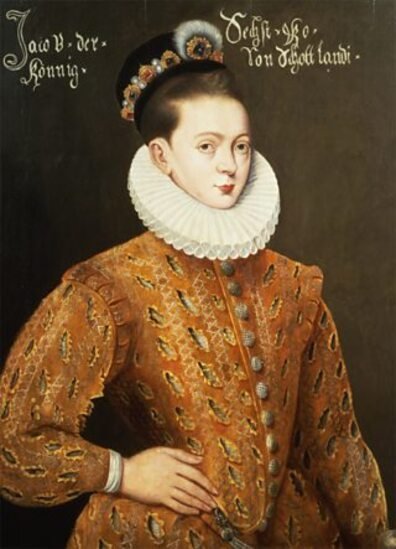

The future King James VI was born on 19th June 1566 in Edinburgh Castle.
He wouldn’t be the future King for long, in little over a year events would see his Mother being forced to give up her throne and the infant crowned monarch on July 24th 1567.
James’s tutor, the historian and poet George Buchanan, was a positive influence and James was a capable scholar.
A succession of regents ruled the kingdom, but these were dangerous times and by the time the young King was 5 two had already been assassinated, and a third a year later “took a vehement sickness" and died, some say was poisoned. The fourth and final Regent survived his term, but in 1781 he was tried for his part in the murder of Lord Darnley, the kings father, and executed.
James had become ruler in 1567, although he did not actually take full control until 1581. He proved to be a shrewd ruler who effectively controlled the various religious and political factions in Scotland.
In 1586, James and Elizabeth I became allies under the Treaty of Berwick.
When his mother was executed by Elizabeth the following year, James did not protest too vociferously - he hoped to be named as Elizabeth’s successor.
James married Anne of Denmark in 1589, three of their seven children survived into adulthood.
When Elizabeth died in March 1603 James became king of England and Ireland in a remarkably smooth transition of power., transferring the Royal court to London he only returned to Scotland once, in 1617.
One of James’s great contributions to England was the Authorised King James’s Version of the bible (1611) which was to become the standard text for more than 250 years. But he disappointed the Puritans who hoped he would introduce some of the more radical religious ideas of the Scottish church, and the Catholics, who anticipated more lenient treatment.
In 1605, a Catholic plot by Guy Fawkes and his friends to blow up king and parliament was uncovered all involved were executed.
The Stuart Monarch’s firm belief in the divine right of kings, and constant need for money, also brought him into conflict repeatedly with parliament, this would also lead to the downfall of his son, Charles I.
Abroad, James attempted to encourage European peace. In 1604, he ended the long-running war with Spain and tried to arrange a marriage between his son and the Spanish Infanta. He married off his daughter Elizabeth to the elector of the palatinate, Frederick, who was the leader of the German Protestants.
James’s eldest son Henry died in 1612, leaving Charles as heir, and his wife Anne in 1619.
James VI himself died on 27th March 1625 and was succeeded by his second son, the aforementioned Charles.
24 notes
·
View notes
Text


Queen consorts of England and Britain | [40/50] | Anne of Denmark
Anne was Queen consort of Scotland from 1589 until 1619 and the Queen consort of England and Ireland from 1603 until 1619 as the wife of James VI and I. She was born on 12 December 1574 to Frederick II of Denmark and Sophie of Mecklenburg-Güstrow. Anne enjoyed a happy upbringing thanks particularly to her mother who took personal charge of her children. In 1589, Anne was betrothed to King James of Scotland and was apparently quite thrilled with the prospect. On 20 August 1589, Anne and James were married by proxy and within ten days, she set sail for Scotland. Unfortunately, her ships were forced to turn back, landing on the coast of Norway, after which she travelled to Oslo to take refuge. James decided to come fetch Anne himself, arriving in Oslo on 19 November. Four days later, the two were officially married in person. Anne and James stayed in Scandanavia for several months, only finally arriving in Scotland on 1 May 1590. Two weeks later, on 17 May, Anne was crowned Queen consort in the first Protestant coronation in Scotland. Anne’s position was tenuous for several years when she failed to get pregnant, but finally, on 19 February 1594, Anne gave birth to her first child named Henry. Unfortunately, Anne soon found that she would have no say in her son’s upbringing so began a furious campaign to gain custody of him. Anne ended up abandoning her cause, but the situation caused a permanent rift in her marriage. She and James had several more children together but they didn’t get along well outside of producing heirs. On 24 March 1603, Elizabeth I of England died and James was made King of England. Four months later, she and James had a joint coronation in England on 25 July 1603. Anne used this opportunity to separate from James and she set up her own household in London. During her time as Queen, Anne had little interest in politics, preferring social activities. Because of this, she has often been regarded as trivial and frivolous. Anne was a great patron of the arts, being an avid fan of plays, masques, and dancing. Starting in about 1614, Anne began being plagued by chronic ill health. Over the next few years, Anne’s health continued to deteriorate, culminating in her death on 2 March 1619.
12 notes
·
View notes
Photo

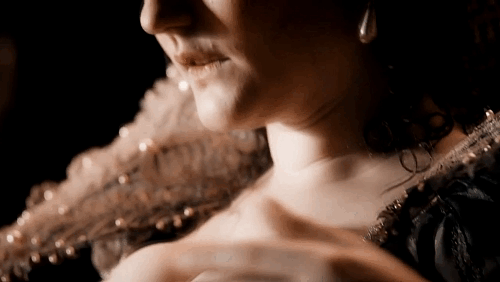
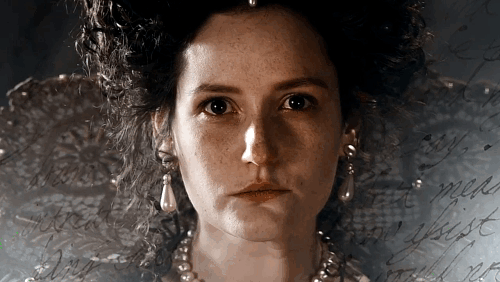
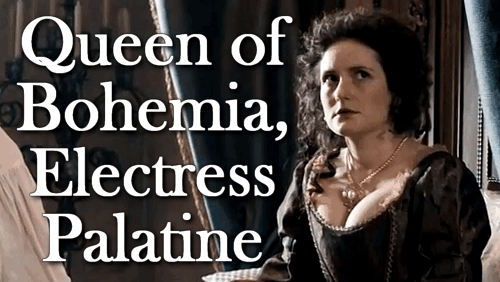
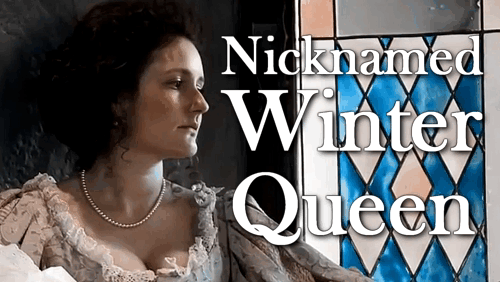
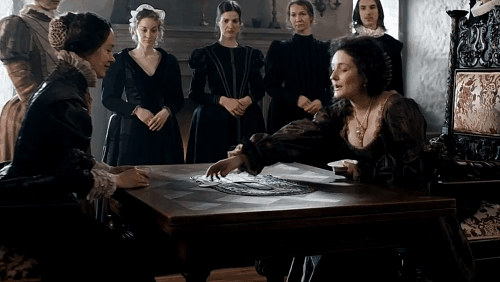
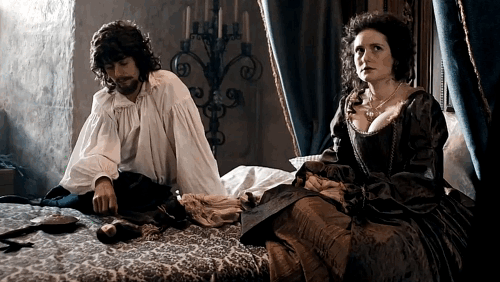
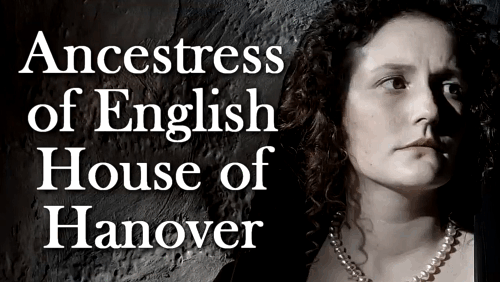
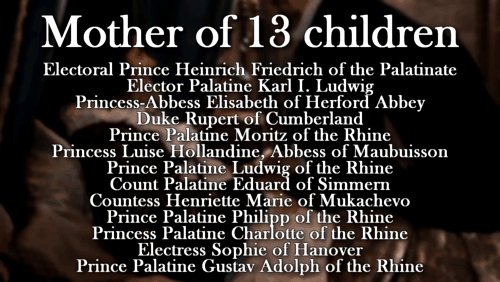
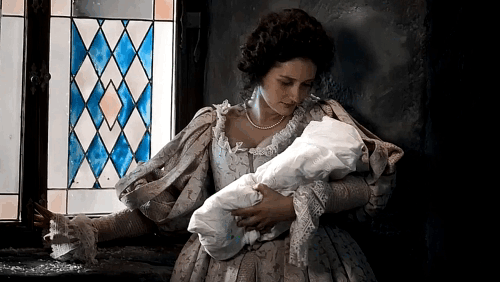
House of Stuart & of Wittelsbach: Elizabeth Stuart
Elizabeth was born as the second child and oldest daughter to King James VI of Scotland and his wife Anne of Denmark. She was named in honor of Queen Elizabeth I of England who her father would succeed as King James I of England. Only two of her siblings survived into adulthood: Prince Henry of Wales and King Charles I of England, Scotland and Ireland.
In her childhood, she moved from noble household to household. Elizabeth studied writing, riding, natural history, geography, theology, French and Italian. Her educator was warned ahead of the Gunpowder Plot. He her brought to Coventry whose citizens swore to protect her. The rebells had planed to take control of her and either place her or her brother on the throne instead of their father.
As a protestant princess, Elizabeth was a desired wedding candidate. Duke Frederick Ulrich of Braunschweig-Lüneburg, Hereditary Prince Otto of Hesse-Kassel, one of the sons of The Duke of Savoy, King Philipp II. of Spain and Elector Palatine Frederick V were interested in marrying her. She decided to marry Frederick. While her father was considering Catholic alliances, her mother was absolutely against it, which is why she did not become Philipp’s wife. The coupled wed on February 14th, 1613, at the Palace of Whitehall.
The marriage of Frederick and Elizabeth is generally described as happy one. The couple shared a love for glamour and luxury. They threw parties and banquets. But Frederick also had to deal with his own depressions which often led him to appoint Prince Christian I of Anhalt-Berleburg as regent. Elizabeth, in the mean time, enjoyed her life and made no effort to learn German. During their first five years of marriage, the couple had their first three children: Heinrich Friedrich, Karl and Elisabeth.
The Bohemian nobility dethroned Archduke Ferdinand of Inner Austria (later Holy Roman Emperor Ferdinand II) as King of Bohemia on August 17th, 1619, and elected Frederick as their king a few days later. The Habsburg have always been a Catholic house but in Bohemia Protestants had begun to rebell and started the Thirty Years’ War with the Second Defentrastion of Prague. Elizabeth did not urge her husband to take the crown but she also did not argue against it. They travelled to Prague in October and were crowned in November when Elizabeth was close to giving birth to their fourth child Rupert.
But the couple was not too popular with the Bohemian people. The Calvinist Frederick sanctioned iconoclastic furies and bathed nacked in the Vltava river alongside his wife’s ladies-in-waiting. Elizabeth’s dresses were also critized of being too risqué and her keeping dogs and monkeys was also unpopular. The Catholic League of course did not just accept the dethronement of Archduke Ferdinand. While they banded together, Frederick basically received no support from his Protestant allies. Elisabeth, again pregnant, fled to Breslau in November 1620. She moved to Küstriz to have her next child Moritz and once her husband joined them, they moved on to Berlin. Their daughter Elisabeth stayed with her grandmother Countess Louise Juliana of Orange-Nassau there, while Elizabeth and Frederick had to move on to the Netherland. Ferdinand II had put Frederick under an Imperial ban. They couple was received with great pomp by Maurice of Orange, an uncle of Frederick and then Stadtholder of the Netherlands. Since their reign over Bohemia was only one winter long, the couple is often nicknamed as Winter King and Winter Queen.
Elizabeth and her husband where financially well off in the 1620s due to the financial support she received from England and the one they received from the Netherlands. But in the years to come, Frederick even lost the Palatinate. Elizabeth however formed court of knowledge and culture in her exile. Her husband continued his fight to win back the Palatinate but died on November 29th, 1632. Elizabeth was devastated but declined an offer by her brother King Charles to return to England with her children. He reasoning to stay was that she would not give up her children’s claims to the Palatinate but if she left it would be seen as that.
Her sons continued the fight for the Palatinate but did only receive diplomatic help from their uncle. After the English civil war, even that ended. Elizabeth also no longer received her stipend of 12,000 pounds. Her relationship with most of her children worsened over time. Her youngest daughter Sophie even said once that she preferred dogs and monkeys over her own children. Her son Karl Ludwig was able to get back parts of the Palatinate in the Peace of Westphalia. But due to conflicts, Elizabeth decided to stay in the Netherlands.
Elizabeth returned to England after her nephew Charles II succeeded to newly restored English throne. She died of bronchitis on February 13th, 1662. Elizabeth is the ancestress of the British House of Hanover through her youngest daughter Sophie who was in 1701 when the Act of Settlement was passed the only living Protestant descendants of the Kings of England and Scottland.
// Rose Bursztein in Age of Iron (2018)
#Period drama#perioddramaedit#English history#women in history#historyedit#Elizabeth Stuart#historic women#Bohemian history#Czech history#German history#European history#Scottish history#1600s#17th century#House of Wittelsbach#House of Stuart#Queen Elizabeth of Bohemia#Electress Palatine Elizabeth#Winter Queen#House of Palatine-Simmern#British history
325 notes
·
View notes
Photo










⚜ Armor of Henry, Prince of Wales, 1608 Made under the direction of Jacob Halder Windsor Castle, England
📜 Prince Henry Frederick (1594-1612) was the elder son of James VI (I), King of England and Scotland, and his wife, Anne of Denmark. Prince Henry was widely seen as a bright and promising heir to his father's thrones. However, at the age of 18, he died of typhoid fever. His younger brother Charles I succeeded him as heir apparent to the English, Irish and Scottish thrones.
🎨🖼 Henry Frederick Stuart, Prince of Wales (1594-1612) Author of the original image: Isaac Oliver
Detailed of the Armor: https://www.rct.uk/collection/72831/armour-garniture-of-henry-future-prince-of-wales-for-the-field-tourney-tilt-and
- - ⚜ Турнирные доспехи Генриха Фредерика Стюарта, принца Уэльского, 1608 год. Виндзорский замок, Англия
📜 Генрих Фредерик Стюарт (1594-1612), старший сын короля Англии и Шотландии Якова I (VI) и королевы Анны Датской, был очень энергичным и открытым человеком. На него возлагались большие надежды, планировалась его свадьба с Екатериной Медичи, однако вскоре приготовления были отменены, так как Генрих был протестантом. Он так и не успел побыть королем Британии. В 1612 году в возрасте 18 лет принц скончался от тифа, а наследным королем стал его младший брат Чарльз I.
🎨🖼 Генрих Фредерик Стюарт, принц Уэльский Автор оригинала изображения: Исаак Оливер
Детальное описание доспехов по ссылке (англ): https://www.rct.uk/collection/72831/armour-garniture-of-henry-future-prince-of-wales-for-the-field-tourney-tilt-and
180 notes
·
View notes